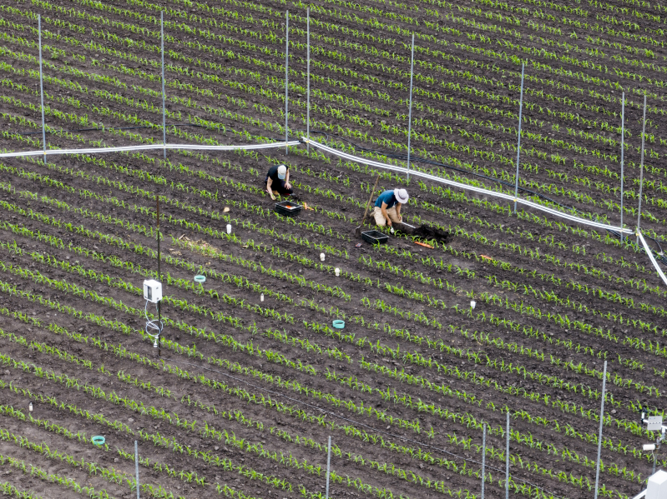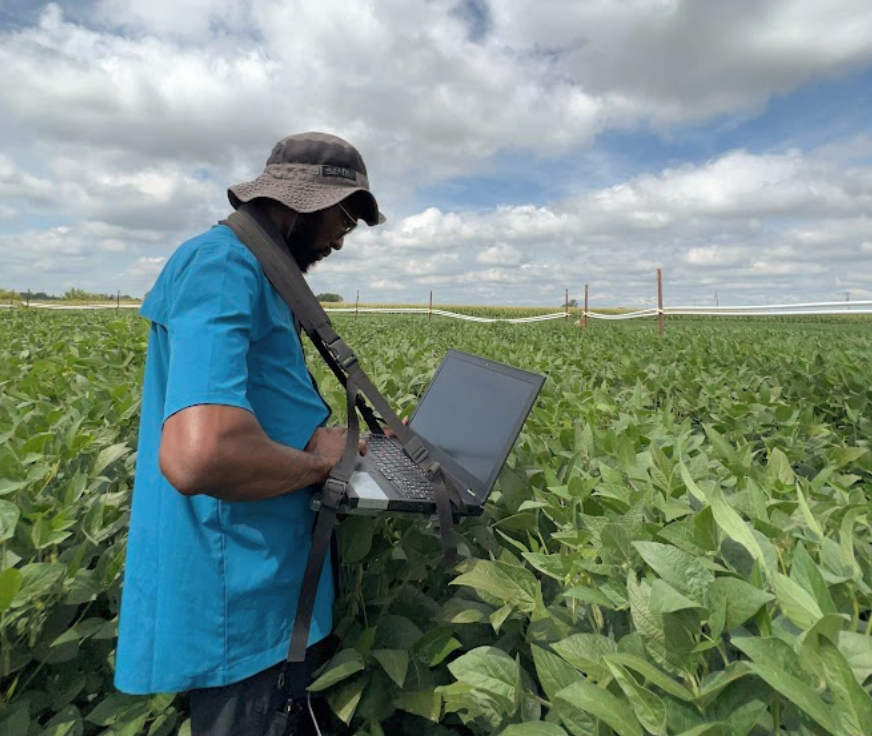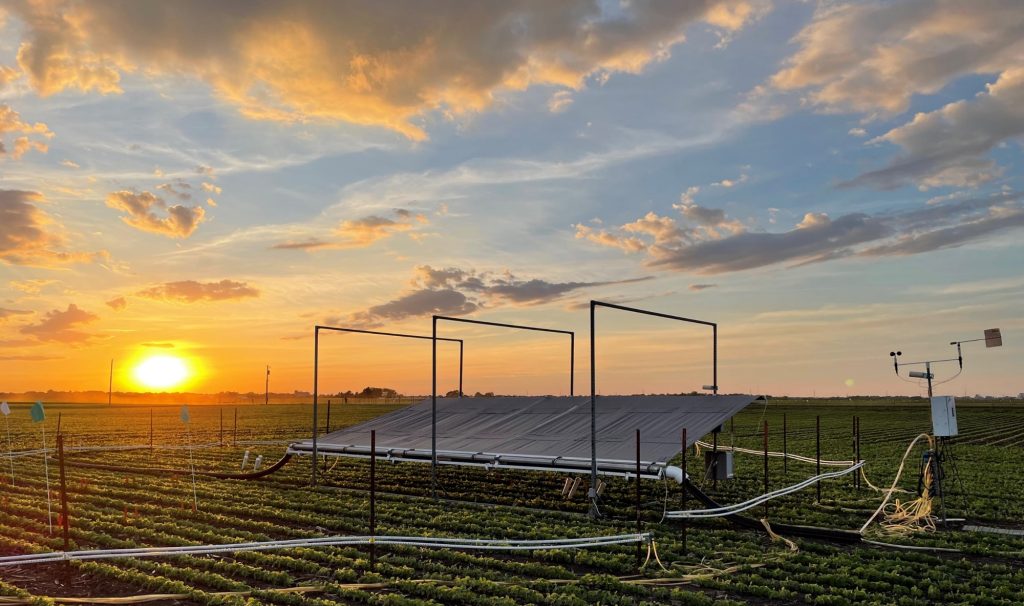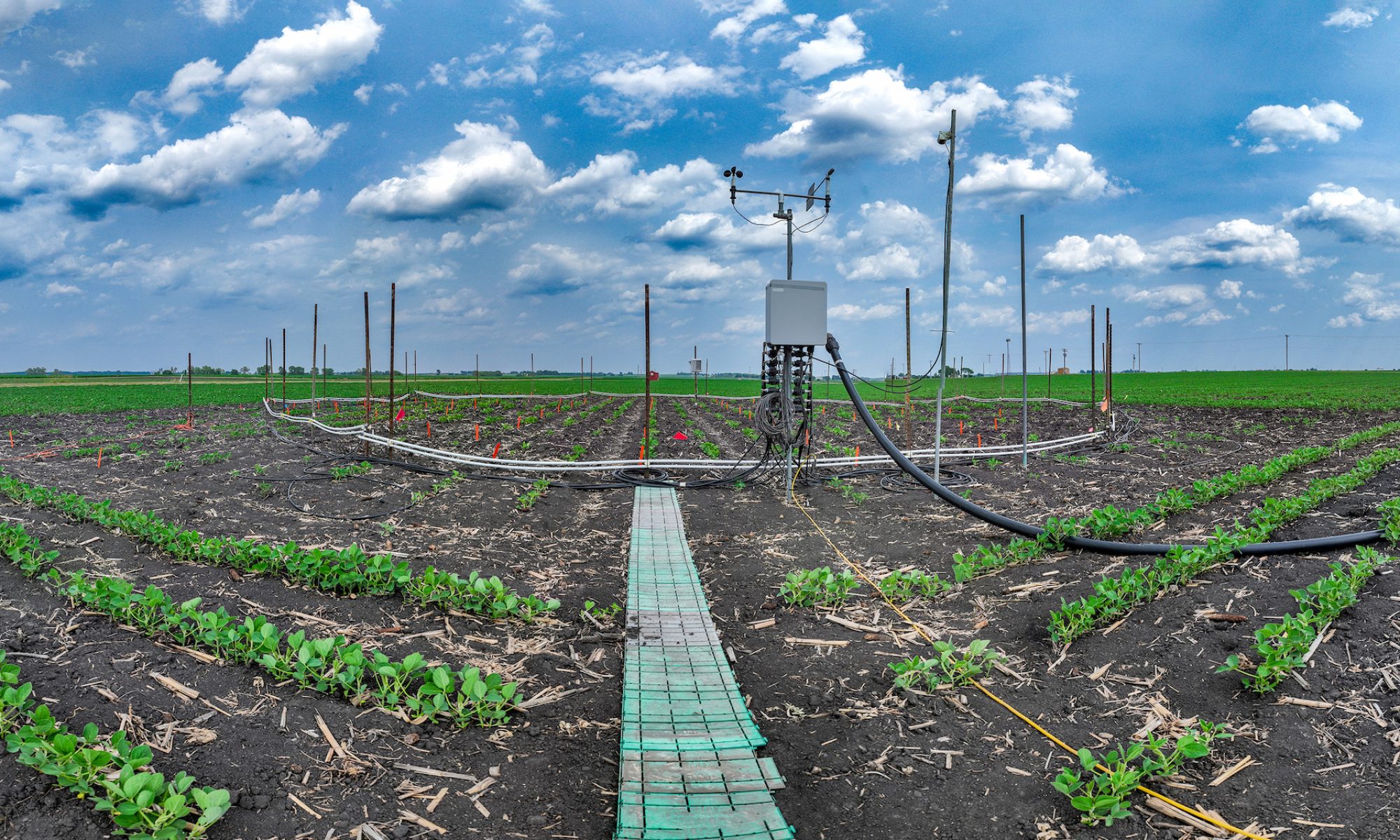RockFACE – Enhanced Rock Weathering x Elevated CO2
As part of the Leverhulme Centre for Climate Change Mitigation, the RockFACE project investigates enhanced rock weathering (ERW) in a maize/soybean rotation under elevated atmospheric CO2. ERW is a CO2 removal strategy that speeds up natural chemical weathering by applying finely milled silicate-based rocks to land or ocean. CO2 and water react with these silicate rocks, forming dissolved bicarbonates that move through groundwater, rivers, and eventually into oceans. In essence, ERW transforms atmospheric CO2 into a more stable form of carbon that is locked away in oceans for thousands of years. These silicate rocks also benefit the cropping system. Cations released during weathering increase soil pH, potentially replacing the need for traditional liming. Micronutrients are also released during weathering that could help boost yields. We hypothesize that crops grown under elevated CO2 will help to speed up ERW. Crops grown under elevated CO2 may have increased root respiration, raising the CO2 level in the soil, and reduced transpiration, raising the soil moisture. Higher levels of soil CO2 and water could increase the rate of ERW. Learn more about ERW here.
The team at SoyFACE: Megan Allen, Mary Durstock, Chris Montes, Chris Moller

Altered Nutritional Uptake Under Elevated CO2
Although higher atmospheric CO2 may increase certain crop yields, this may come at the cost of lower concentrations of vital nutrients, including protein, iron and zinc. This raises concerns for food quality in the future, particularly in food-insecure regions that are already facing nutrient deficiencies. We must understand how elevated CO2 reduces nutritional content to effectively develop nutritious, next-generation food crops. Seldon Kwafo, a graduate student in the McGrath lab, is testing the hypothesis that this loss of nutritional quality is due to reduced transpiration under elevated CO2. Transpiration generates a negative pressure that drives absorption and transportation of dissolved nutrients into the plant. Therefore, as stomata close and transpiration slows under elevated CO2, crops may take up less nutrients, leading to lower nutrient concentrations in the harvested crop. Seldon aims to test this hypothesis with the aid of hyperspectral imaging. Read more about Seldon’s work here.
Led by: Seldon Kwafo
Funded by the Rockey Foundation for Food and Agriculture Research (FFAR) Fellowship

Interactions Between Drought and Ozone Stress
Climate change doesn’t just mean increased CO2, with concentrations of tropospheric ozone and the incidence and severity of drought events also expected to rise. Drought and ozone stress in plants are both linked with impaired photosynthetic rates and significantly reduced yields. However, as drought and ozone stress become more likely to coincide in future climates, it is important to assess their joint impacts on crop physiology. Combining these two stressors will likely go one of two ways- either their negative impacts will be additive and reduce yields even more, or drought stress induced stomatal closure will limit the amount of ozone taken up and protect the plant. Duncan Martin, a graduate student in the Ainsworth lab, is putting this to the test at SoyFACE, with the FACE rings raising ozone concentrations and deployable awnings keeping out rainfall (pictured below).
Led by: Duncan Martin

